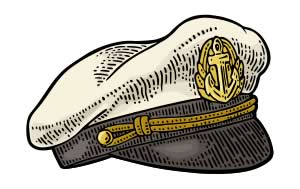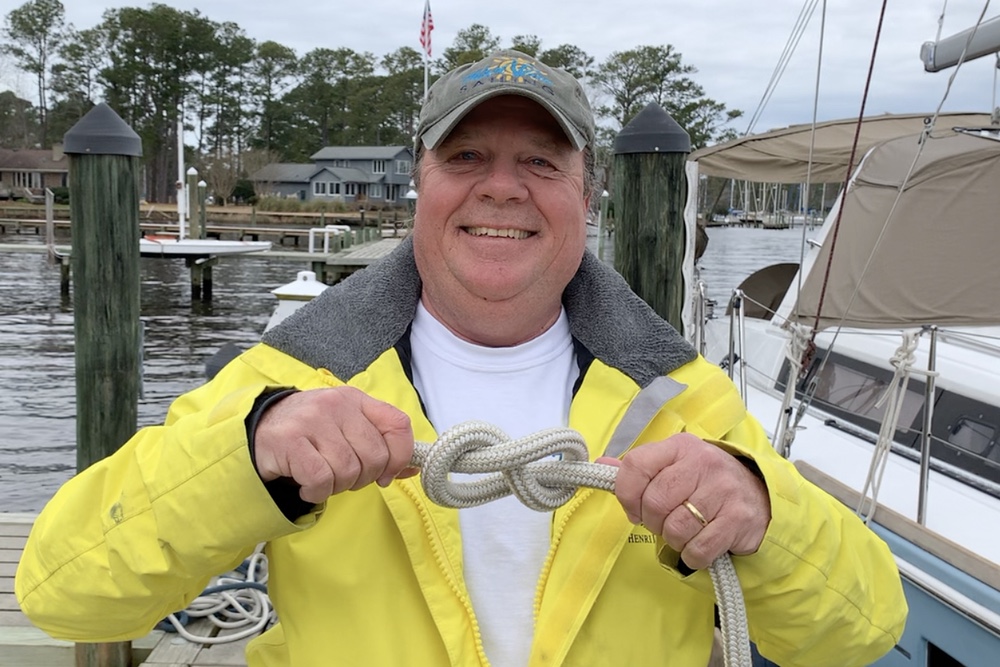It's Wednesday October 15, 2025

February 2021
The Ashley Book of Knots retails on Amazon for $49.25. The paperback is $35. The Ashley book is the bible of knot tying – Old Testament for sure: it was published in 1944 by Clifford Ashley.From New Bedford Massachusetts, Ashley was an American artist, author, sailor, and knot expert. (His artwork is pricey.)
Interestingly, a mountain on South Georgia Island is named after him (probably his connections to the New Bedford whaling industry).
Ashley took eleven years to write his knot book. It contains 3,854 entries and approximately 7,000 illustrations. The Ashley Stopper knot and Ashley bend are namesakes. However, on the downside, the book was written during the time of natural fibers = no synthetics. The book fails to address the workings of slippery synthetic lines.
Also, Ashley suffered a debilitating stroke and died in 1947. He was unable to complete the corrections and updates. Still, the Ashley Book of Knots is a good book to own. When bored in front of the television, you can amuse yourself by tying various worthless knots you will never use (ouch).
My point is, for sailboat operators, only five knots are required. That is correct, five. The five are: cleat hitch, figure eight stopper knot, round turn with two half-hitches, bowline, and rolling hitch. Here is the line-up:
• Cleat hitch: Used to secure a line, halyard or sheets to a cleat. See last month’s video.
• Figure eight stopper knot: Used at the bitter end to prevent a line, halyard or sheet from being pulled through a block or clutch.
• Round turn with two half-hitches: Used for anything that hangs (fenders). See last month’s blog.
• Bowline: When you need a non-slipping loop
• Rolling hitch: Transfers a load from one line or chain over to another line. For example, an anchor snubber or fixing an overwrap on a winch and some (pulled) slack is required to get the sheet off the winch. Practical Sailor recommends the icicle hitch instead of the rolling hitch because modern synthetic lines are slippery.
• Reefing knot: Exactly the same as a square knot. Square knots are for Scouts. Reefing knots are for sailors.
• Clove hitch: When a temporary lashing is required. Read on.“But Captain John, that is six knots.” Yes. I confess the clove hitch makes six. The reefing knot makes seven.
For clarity, I try not to use a clove hitch. I forbid the use of clove hitches on our boat. I dislike the clove hitch because it is the worse of two worlds. It works itself loose easily. And if loaded up, it can be difficult to untie.
Dockhands often use a clove hitch for dock lines. This application is a little better because the dock line can bite into the big round wooden piling. Still, I will normally go around and re-tie the dockhand’s clove hitches into a round turn and two half hitches. The American Sailing Association classifies the clove hitch as a temporary knot. And frankly, I only teach it (or even mention it) because ASA mandates clove hitch proficiency in their certification curriculum. Enough on the clove hitch.
“But Captain John, what about the reefing knot?” Yes, I failed to mention that. The reefing knot is exactly the same as a square knot and used to join two lines of equal diameter. Remember unequal lines are joined using a sheet bend (probably good to know that one too). So without the clove hitch and cleat hitch (not really a knot), I am back to five knots total.
Anyway, watch the video Five Knots in Three Minutes. These five are all you need. To stay untangled, learn to tie these with your eyes closed. Master the basics before moving on to the exotic. Enhance efficiency and safety by standardizing the knots on your boat. Proficiency with these requires practice. Enjoy.
Fair Winds,
Captain John RahmNot a clove hitch. Captain John Rahm shows off a figure eight stopper knot.Related Links• New Year’s Boat-er-lutions
 Captain's Blog on TownDock.net is all about making your time on the water enjoyable. Captain John Rahm teaches sailing and boat handling at Third Wave Sailing. Captain's Blog on TownDock.net is all about making your time on the water enjoyable. Captain John Rahm teaches sailing and boat handling at Third Wave Sailing. |
